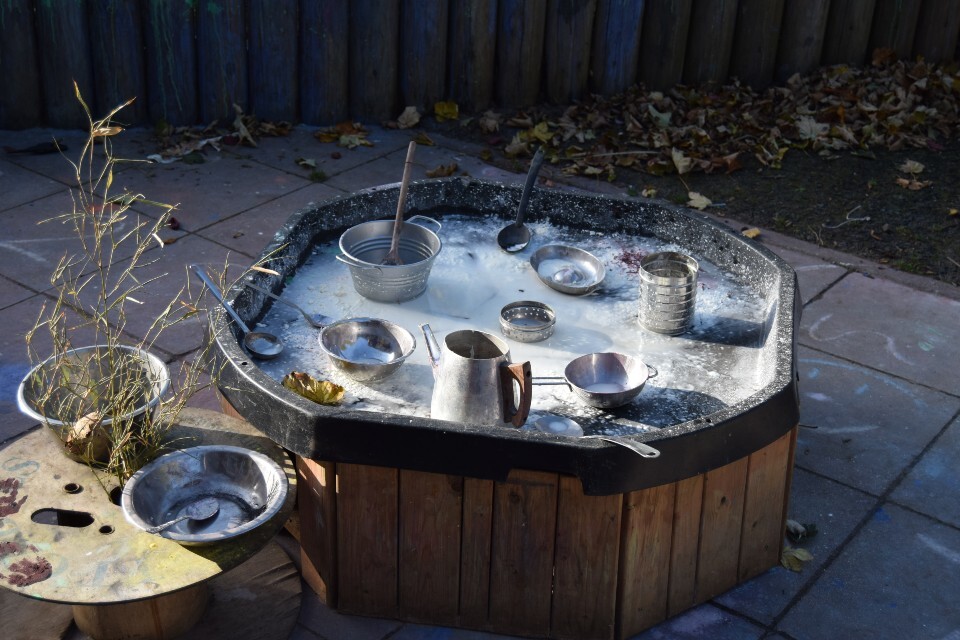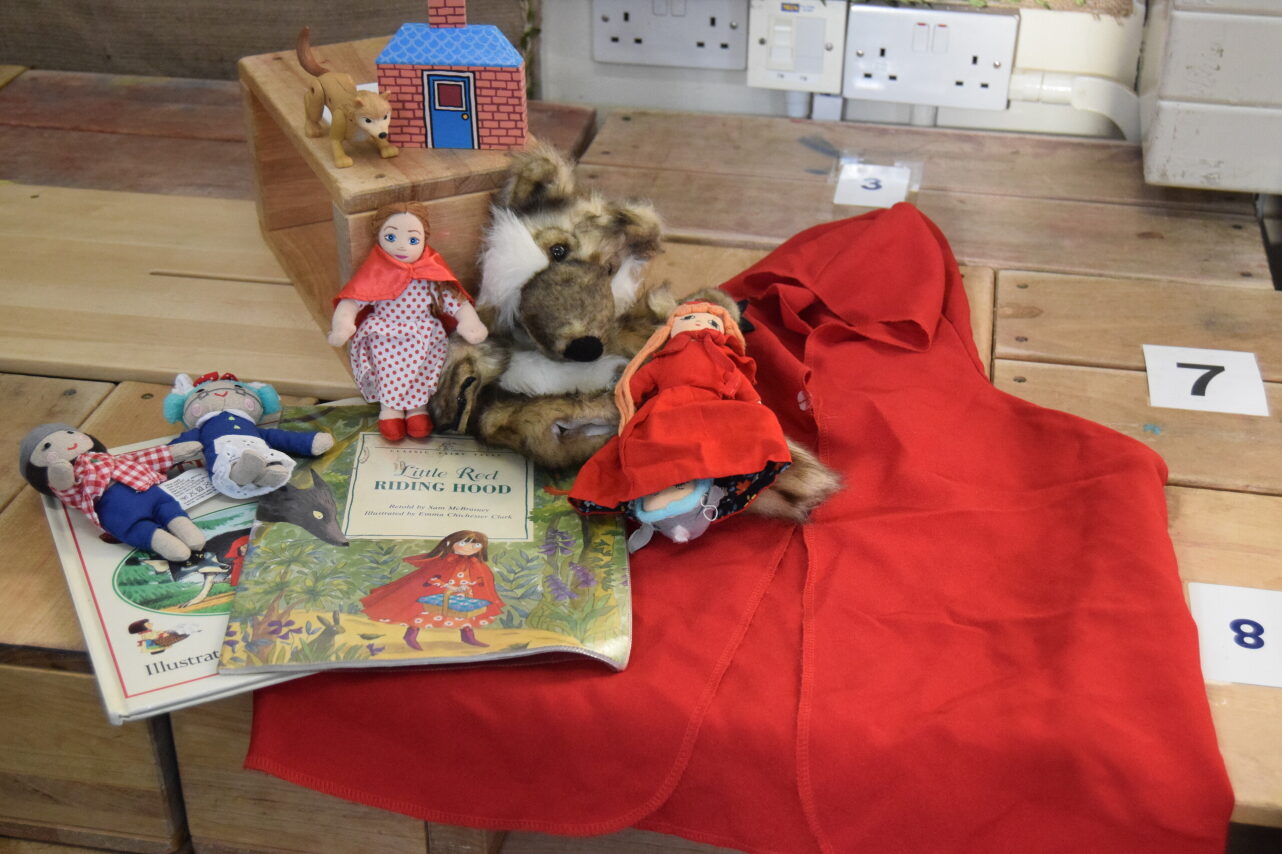Writing
Start young children off with mark making and work on hand-eye coordination and finger strength to prepare them for later writing.
Contents on this page
Why writing is important
Writing is an important lifelong skill. Children need to learn to write so they can communicate and express themselves.
Formal writing, taught later in reception, involves transcription (spelling and handwriting) and composition (articulating ideas and structuring them in speech, before writing).
Formal writing before reception is not necessary, however, you can provide lots of meaningful opportunities for children to learn about the written word and to support them to understand that symbols carry meaning.
Research shows that for writing to develop, you should provide young children with opportunities to build their physical strength and control in the core, upper body, hands and fingers.
Writing develops alongside all learning areas, especially communication and language, reading and mathematics.
When you read texts, you show that print carries meaning. When you write, you explain what decisions you are making in your mind, so children understand how they share thoughts, ideas and feelings. As you model writing you support children to:
- understand language patterns
- develop their thinking skills
- solve problems
- make sense of their experiences
Listening to children talking and modelling how to write down the words they say helps children to see how sounds become words on paper.
Sharing children’s early mark-making attempts with parents and carers builds children’s confidence and self-esteem.
Video
An early years expert explains how to prepare children for writing in the early years foundation stage framework (EYFS). There are also some tips on how to support children in this area.
What the EYFS framework says
Writing involves transcription (spelling and handwriting) and composition (articulating ideas and structuring them in speech, before writing).
Statutory framework for the early years foundation stage.
What this means in practice
Children learn that you can communicate through writing, and that marks have meaning, by watching you write. You could write labels in front of them, while you explain, the direction of print, or what the word is. Use these labels for everyday objects the children are interested in. For example, cars, pram or bike park.
To support transcription, give children opportunities to develop finger strength. In the early stages children need lots of fun, play activities. Provide lots of activities to work at a large scale using brushes on walls outside, before they move on to using chunky crayons or pencils. For example, to develop finger strength in preparation for writing, show them activities like manipulating dough, completing puzzles or threading blocks onto a rope.
Help children develop fine motor skills to grasp, hold, and strengthen fingers and thumbs by scrunching paper and using pick-up tools. For example, use big tweezers to pick up plastic shapes.
Give them opportunities to develop core strength and ‘muscle isolation’, a crucial first step towards writing. Activities like reaching across the body to put on socks and shoes help children to use their right, or left, body side without the other side moving at the same time. Also, encourage activities like climbing, throwing and catching.
Children move through stages in their mark making. Gradually muscle control becomes more defined until they develop an ability to use straight lines and curves to form symbols.
Generally, 0 to 2 year olds enjoy sensory activities, establishing fun and fascination with shapes, marks, letters and numbers. For example, hide letters and shapes in foamy water. Share books, repeating words, phrases and rhymes. Play finger games like ‘Incy Wincy Spider’. Concentrate on activities that could lead to writing, like making marks with large toys, or with fingers in wet sand.
Generally, 2 to 3 year olds like retelling favourite stories and events. Capture these through drawing lines, dots and circles. Promote physical development, communication and understanding. If children use a particular dominant hand, encourage them. This age group should learn ‘mark-making’.
Generally, 3 to 4 year olds start behaving like writers, making wavy lines and distinct separate marks. If children show an interest and want to write, it is crucial that they should develop hand and finger strength to hold a chunky crayon or pencil comfortably and with control. Eventually they may be able to make attempts to write some very familiar letters, for example from their name.
Preschool children are not expected to achieve conventional spelling patterns, it is the attempt that counts, and the realisation that marks have meaning.
If children show an interest in writing letters, you can support them to be ready for the next stage of their learning by encouraging them to hold a pencil correctly and form the letter starting in the right place and moving in the right direction. This will support them to develop good habits for the future.
Support children’s composition by reading stories, talking to children, re-phrasing what they have said and modelling correct sentence structure. This will support children to share their ideas and help them to develop an understanding of how sentences are formed. Activities, like those in the communication and language sections and within the exploring words section, can help to extend a child’s vocabulary and give them words to as they begin to form sentences.
You provide many opportunities for children to capture their thinking and structure it for a range of purposes and audiences (composition). For example, record names of characters in their favourite picture books; make invitations to members of their family for parties, shows or local events. Role play about everyday experiences provide opportunities to write, for example, an office using a keyboard, answering a phone and making notes for Mummy or Daddy. If they go to the shops they may ‘write’ shopping lists for what they need to buy.
Suggested activities
Recipes for dragon soup

You’ll need:
- a ‘mud kitchen’, or outdoor area with old pots and pans, kitchen utensils and stirring sticks. If you do not have a suitable outdoor area, you could do this inside on top of newspaper, an old carpet or sheet
- chefs outfits like hats, aprons or anything children might enjoy dressing up in
- potion bottles, pestle and mortar
- clipboards, marker pens or felt tips
- vegetables, these can be wooden, plastic, playdough or real
- herbs, to smell and talk about
- flower petals, if available
- containers, dishes, bowls, colanders
If you cannot do muddy play, provide other materials like a baking tray with a thin layer of sand, salt, glitter, or sieved flour. Children could make marks with the back of a fork or spoon, a paintbrush, finger or stick.
Ask children to be ‘chef’, making new dragon soup recipes.
Talk about ingredients, how to prepare and sort them. Do we cut them? How many do we need? Make lists together using letters, words or shapes. Either write them yourself with the children watching, or the children could make marks.
Children can pick up ingredients using utensils, stirring, scooping or pouring from one pan to another. Poke the mixture through a colander’s holes, building finger strength.
Children can record or write their used ingredients using the clipboard, paper and tools. Younger children may talk about what they do, as a running commentary. Older children may attempt to write words or letters, showing used ingredients, for example, ‘c’ for carrot, ‘o’ for onion.
How this activity links to the other areas of learning
Children gain real life experience choosing ingredients and taking a shopping list to the shops (understanding the world). They use gross and fine motor skills to stir, poke and write (physical development). They talk about their recipes, noticing smells and actions (communication and language). They read about other recipes and dragon stories (reading comprehension).
Little Red Riding Hood

You’ll need:
- a copy of Little Red Riding Hood, there are many versions, so children can understand different character viewpoints. In some versions, Little Red Riding Hood is a boy or girl. Anyone can be the character
- dressing up clothes, a piece of red cloth, a headband with ears, a tail, a basket with shopping items
- a large piece of paper taped under the table, a selection of small paper sheets, envelopes, postcards, various crayons, paints and pencils
- miniature characters, trees and animals
- sensory materials, like playdough or fabrics
Tell or read your copy of Little Red Riding Hood. Talk about characters, while exploring and sharing thoughts, ideas and feelings using the storyline.
Help children write an invitation to Little Red Riding Hood visiting Grandma’s house, addressing an envelope.
What do they need to take? Make a list, a map, food and water, a basket.
Draw a map on the large paper. Draw pictures on it, and label them. Help the children write instructions, so Little Red Riding Hood can find the way.
Roleplay, listening to and developing children’s ideas. Find opportunities for as many mark-making or writing attempts for older children as possible.
Adapt based on the children’s ages. Some will be able to make some marks, while older ones might write down character’s names, or shopping lists.
How this activity links to the other areas of learning
Mark-making will develop gross and fine motor skills (physical development). Roleplay will mean acting out the stories (imagination and creativity), while listening to them (reading comprehension). While listening, children will seek out rhyming words and sounds (exploring words).
Other activities
Learning to write activities, short video.
Developing fine motor skills in preparation for writing, First Discoverers.
What other nurseries and childminders are doing
“Writing is a form of communication. We encourage children to look at print around preschool, and on our listening walks. There are opportunities in all areas to write using different mark-makers. As fine and gross motor skills are essential for a child to be ready to write, we make sure children develop hand muscles though small, loose-part play. Roleplay creates confidence, helping children get ready for school.”
Angela, Hatch Warren Preschool, Basingstoke.
Summary
- Writing is a lifelong skill, allowing children to share thoughts, ideas and feelings.
- Children need hand-eye coordination and finger strength before learning to write.
- Younger children should learn basic mark-making and older children to make plausible attempts at capturing some sounds they hear in words.
- Writing builds on children’s understanding of language and how print works.
- You should model writing and explain your thinking and decision making to help children understand what happens as you write and can begin to copy you.
Next steps
- Think about the opportunities you give children to develop muscle strength.
- Motivate children to make plausible attempts to behave like a writer, and to draw freely making marks that have meaning.
- Provide a wide range of opportunities, such as, wet sand, corn flour, foam, chunky markers, clipboards, chalks for paving stones, and notepads.
- Plan small muscle coordination for hands and fingers, through things like using scissors, learning to sew, eating with cutlery, using small painting brushes or drawing pencils and crayons.
